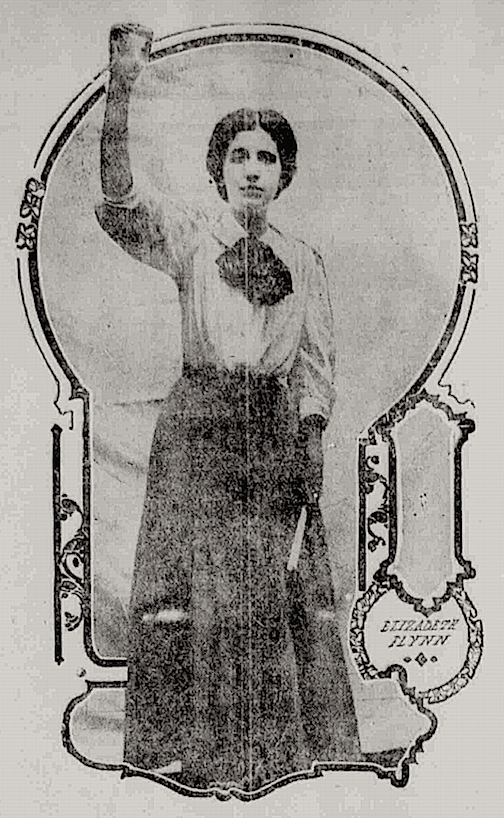 —————
—————
Hellraisers Journal – Monday September 1, 1913
“Copper Country” of Michigan – Western Federation of Miners Issues Strike Call
From the International Socialist Review of September 1913:
The Copper Miners’ Strike
By Edward J. McGurty[Part I of II]
THE territory known as the “Copper Country” of Michigan is a peaked peninsula lying to the north of the Upper Peninsula. It is washed on three sides by the waters of Lake Superior, embracing the counties of Keweenaw, Houghton and Ontonagon.
The country is rich in copper and has one of the deepest incline shafts in the world, the Calumet & Hecla No. 7, at Calumet, which goes down about 8,000 feet. The Calumet & Hecla Company, with its subsidiaries, owns and controls practically all the property up here. For the past thirty years there has been no labor trouble here of any consequence. In that time the C. & H. has paid out $125,000,000 in dividends on an original capitalization of $1,200,000. The employes, many of them Cornish miners, have not revolted for years. They have submitted to every injustice and to tremendous exploitation.
For a number of years it was impossible for the Western Federation to make any headway in the Upper Peninsula. Attempts at organization have been met by the sacking and firing of men. Little could be accomplished. Gradually the Federation formed organizations at various points along the range. The Finns were very zealous in keeping activity alive. This last year especial efforts have been made to organize the men of the various nationalities. Those working in the mines are Cornish, Finnish, Croatian, Italian and Austrian. Up to May first, about 7,000 men were taken into the union.
The companies have worked a pseudo-contract system and cheated the men outright. They have paid low wages, many of the men getting as low as a $1.00 a day and some even less. The shifts have been long, running as high as twelve and thirteen hours. Last year the companies installed what is known as a “one-man” drill which is a man-killer.
It was the straw that broke the camel’s back in the copper zone. On the night of July 22, men went from one end of the range to the other, on foot and in rigs rousing the miners and making known the strike order. The next day there were 15,000 mine-workers who had laid down their tools. Smelter-men, surface-men, under-ground-men, all were out and the copper mines were tied up as tight as a drum. Then the men who had not already joined the union began to make their way to the offices and in a few days 90 per cent of the miners were organized.
Directly the men went out the sheriff of Houghton county deputized about 500 men and sent them about to create trouble. They provoked the strikers to the breaking point and there were 500 deputies without stars or guns in a short time. There were also a few of them went to the hospitals.
The papers here, under the control of the companies, have, as usual, lied about the strike, slandered the strikers, burned the “locations” up in their columns; killed law-officers, etc. The second day of the strike the sheriff acting under orders from McNaughton, $85,000-a-year-manager of the Calumet & Hecla, requested troops from Governor Ferris. Without any investigation of the situation Ferris ordered the entire state militia dispatched here. Protest after protest has been made by the people here, because the presence of the troops is for the purpose of creating trouble. But Ferris stalwartly keeps them here.
The commander of the troops is a real, dyed-in-the-wool conservative. He says that the refusal of the union men to work the pumps and keep water from flowing into the mines amounts to the DESTRUCTION OF PROPERTY. Even in times of industrial war, the mine-owners are accustomed to meek wage slaves that pump the water out of the mines.
The troops have ridden up the streets of Calumet and Red Jacket at night on horse-back and have ruthlessly clubbed innocent men and women conversing on the side-walks. They knocked down an old man of 70, and threw a baby out of a buggy onto the pavement. They have shot at strikers all over the range when the strikers were doing picket duty.

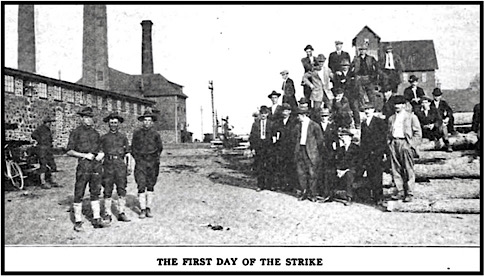
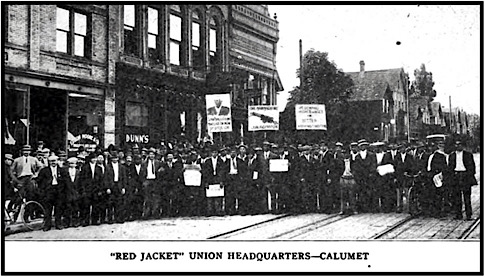
 —————
—————
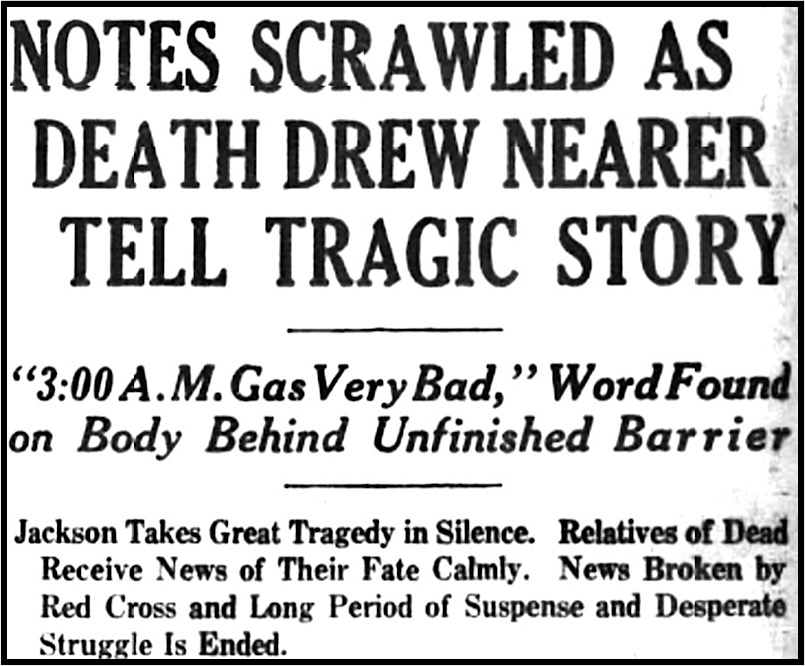

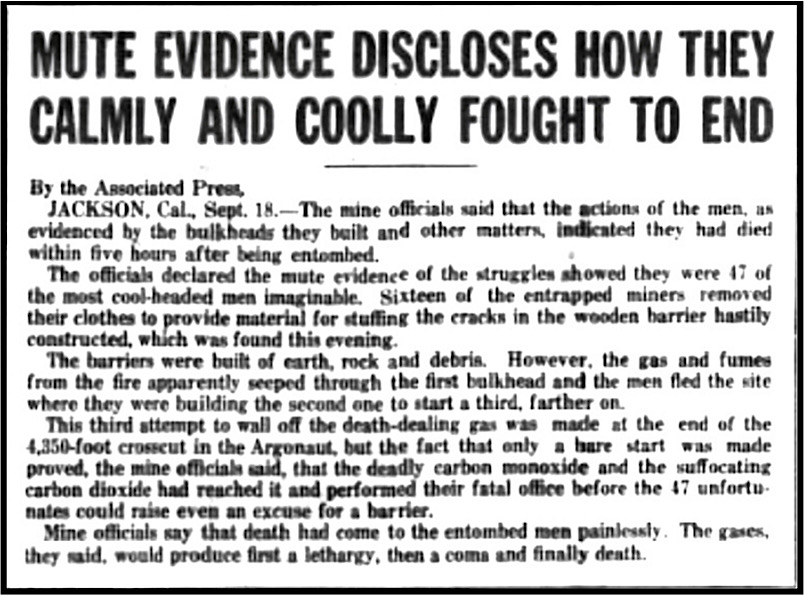
 ———-
———-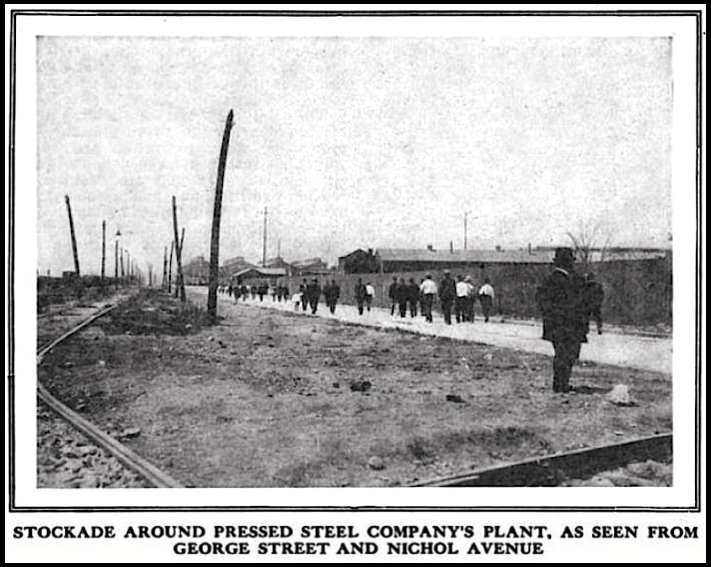 —–
—–